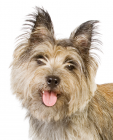Cairn Terrier
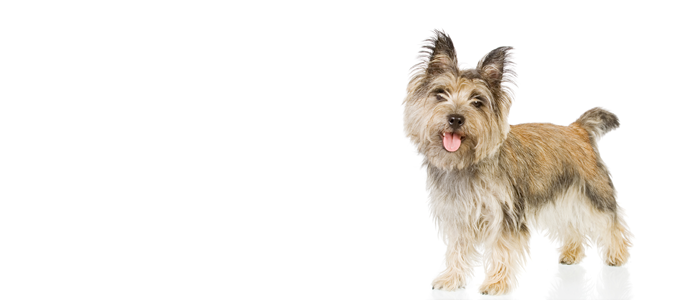
In my own words
I come from wee bonny Scotland, hundreds of years ago where I used to hunt and catch vermin in and around the Highlands. Little dog syndrome is sometimes what I hear people call me, but on a good day my best nickname is ‘best little pal in the world’. Sometimes I do feel like a big dog trapped inside a little dog's body, I’m small, yet sturdy and tough definitely not your delicate lapdog. Large dog don’t intimidate me. My favourite hobbies are digging, digging and more digging, followed by a lot of chasing especially squirrels in the park. I love chasing small animals so much so that sometimes I can get confused and think small children are small animals, so they tend not to be allowed round me.
I do like to shout a lot if I’m left alone or bored, I need something to focus my attention on. I absolutely love to play games and always the comedian trying to make you laugh with everything I do. Like with all terriers like me I need to be told who’s boss, otherwise it all goes to my head and I think I can honestly run the world.
My ideal owner(s)
Families with older children
Playful owners
Loving
Leaders
Active
What they say about me
Adventurous
Tough
Loyal
Protective
Inquisitive
Bossy
Playful
Mischievous
Is this Cairn Terrier for you?
Test your knowledge about the Cairn Terrier
Information essential about the Cairn Terrier
Breed Group - Terrier
SIZE
Height: Bitch 28cm-31cm., Dog 28cm-31cm.
Weight: Bitch 6kg-7 ½ kg. Dog 6kg-7 ½ kg.
Popularity:
Not only is this one of the oldest terrier breeds, but the Cairn Terrier is also one of the most well known of all small shaggy terriers, thanks to the character “Toto” in the famous Wizard of Oz movie. The Cairn terrier has remained remarkably true to its origins, despite nearly a century of participation in pure-pedigreed dog shows. It has become neither beautified nor exaggerated in appearance and is very close to its ancestral type.
Breed History:
The exact origins of the Cairn have slightly been lost in the mists of Scottish history, but what is known is its descended from the original indigenous working terrier from the Highlands. Way back when King James 1st ruled in the 1500s there were references to the Cairn as a group of the terriers where sent to the King who thought of them highly. The dogs were used by crofters, shepherds and fox hunters mainly for pest control purposes against foxes, rats and rabbits which was their earliest quarry, but welcoming the eighteenth century and its emphasis on sporting pursuits, the dogs were used more against badgers and otters. They excelled at ‘gameness’ – the ability to ignore pain and continue to fight on- in fact became quite legendary. From the mid nineteenth century the differences began to resolve and the separate breeds of terrier started to appear- the Skye, Scottish and the West highland White all became a lot more established, but their progenitor the Cairn stayed comparatively unknown. It wasn’t until 1910 that the Kennel Club accepted the breed for its short coated, prick eared appearance. The breed was named after the rocks (cairns), which were erected to mark a boundary or grave. These rocks became the favourite hiding place for foxes and other pests and a small but fearless terrier was required to rout out the vermin.
Character:
When most people hear the word terrier, they picture Toto, the Cairn Terrier in The Wizard of Oz -- and rightfully so, because this sturdy little dog breed is everything a terrier was designed to be: strong, hardy, up on his toes, confident, plucky, and spirited. The Cairn Terrier loves to play and needs his daily walks, but is adaptable to any home in which he can be a full participant and busybody and where his bold terrier traits are kept under control.
Adult Cairn Terriers may be friendly or reserved with strangers, but are always alert and quick to announce guests. They love their families and need attention and affection from their humans. They are protective of their families, and will defend their territory with courage and devotion. They love long walks and like to play ball, or simply tear around the backyard with the kids. They excel at obedience, agility, and tracking trials. They remain active and playful well into their teen years and by far extremely companionable, loyal and loving. They make great listeners, perky playmates, and good foot warmers. They've been nicknamed "the best little pal in the world."
He loves people, is an able swimmer and a great hunter. Ready for any activity, he makes an ideal companion for a family, fitting in well with any lifestyle. Although very small children and Cairn terriers are not a good mix. This breed doesn't have a lot of patience and has been known to bite. Children who are too young to know when to leave a dog alone do not mix well with this breed.
No two Cairns are truly alike; each has distinct personality and character differences.
Temperament:
This is a cheerful, alert, lively and extrovert breed and makes ideal friends for older children as they can tolerate rough play and have great senses of humour. They will also get on with other dogs, although some will stand their ground.
As with all terriers, the Cairn can be stubborn and independent and try to be the boss. This aspect of your dog’s temperament means that you need to show him that you are in charge. He is afraid of nothing and if he thinks he rules your home, he can get into trouble. Your Cairn terrier will often bark at the slightest sound. This is typical of terrier dog temperaments, and it can make him unpopular with your neighbors. You will need to train him to stop barking on command, and confine him when you aren’t there to keep an eye on him. He was bred to chase, so he has a very strong prey drive. He won’t be able to resist the opportunity to run after anything that looks like prey. You must be extremely cautious about letting your Cairn off leash, because he will go after anything that moves, and he will find it hard to come back when called.
Most terrier breeds are remarkably similar. The same words are used over and over -- quick to bark, quick to chase, lively, bossy, feisty, scrappy, clever, independent, stubborn, persistent, impulsive, intense.
Conformation:
Scottish in ancestry, this small, sturdy terrier is in every way a game little dog. He is very natural, with a slightly shaggy, but not unkempt, appearance, and his double waterproof coat takes very little effort to look after. He has a particularly expressive head, which is set off by dark, sparkling eyes that give a good indication of his character. He has small prick ears and shaggy eyebrows and his expression can change from mischievousness to one of gentle devotion very quickly.
Colour:
Cairns come in cream, wheaten, red, grey or nearly black
Training:
Cairn Terriers must be taught at an early age that they are not the rulers of the world. The toughness that makes them suited to killing vermin can frustrate you when you try to teach them anything. Cairn Terriers can be stubborn and dominant (they want to be the boss) and will make you prove that you can make them do things. You must show them, through absolute consistency, that you mean what you say. Due to the Cairn’s traits of being stubborn and willful, training requires consistency, patience, and lots of treats. Discipline is wasted on the Cairn, as they will just stop listening to you all together. They must be trained early on to understand who is in charge of the house, given the chance a Cairn will see any opportunity to bend the rules, they'll take it and run with it. This breed generally wants to please their owner so getting them to do, as you require shouldn’t be too difficult. However, establishing your role as the dominant member in the family is essential so that they then realise who is boss. By undertaking training with a positive nature, this will rub off on your dog and make the process much easier.
Care:
Without regular brushing, combing, and trimming/clipping, Cairn Terriers become a matted mess. On the plus side, their shedding is on the low side of average.
Health:
The Cairn terrier is a long-lived breed with an average life expectancy of 13 to 14 years. Generally an extremely healthy breed. However, like all dogs, there are some concerns that owners should be on the lookout for. The first of these is ocular melanosis, an inherited problem related to this breed. When it occurs, the production of pigment within the eyes increases and causes a build-up of fluid. Another of the common Cairn terrier health problems is craniomandibular osteopathy (CMO), a fairly common problem in terrier breeds. It is found primarily in young, growing dogs and is identifiable by excess bone growth around the jaw and skull. Other breed health concerns may include allergies, cataracts, and liver disease.
You may also like:
If you like Cairn Terriers, you may be interested in breeds of the same size »
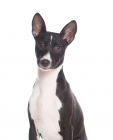
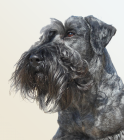

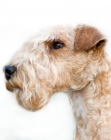
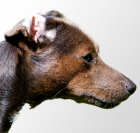
If you like Cairn Terriers, you may like other breeds with similar characteristics »
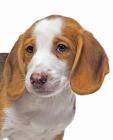


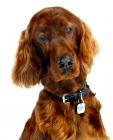
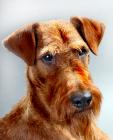
If you like Cairn Terriers, you may be interested in these other terrier dogs »
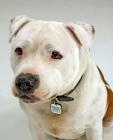



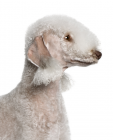
Advice on choosing your breed »
Find an animal shelter or rescue home where a Cairn Terrier is waiting for a new home »
If you want a small, yet sturdy and tough dog that’s not a delicate lapdog, has a natural appearance, needs only moderate exercise, makes a keen watchdog, doesn't shed too much and can co-exist with other pets more willingly than some other terriers then this is the dog for you. But be sure to remember and prepare for the dynamic terrier temperament, be aware of potential aggression towards other animals- strong chasing instincts. Occasional stubbornness, an obsession with digging holes, and possible barking please consider wisely.
Be the first to rate this breed »
|
*PLEASE NOTE: All our breed profiles are general, and all dogs are individuals. Always talk to the breeders and meet the owners you are buying from. Try to meet the dog and its parents if it is a puppy in their home environment.








